SUMMARY
This is AI generated summarization, which may have errors. For context, always refer to the full article.
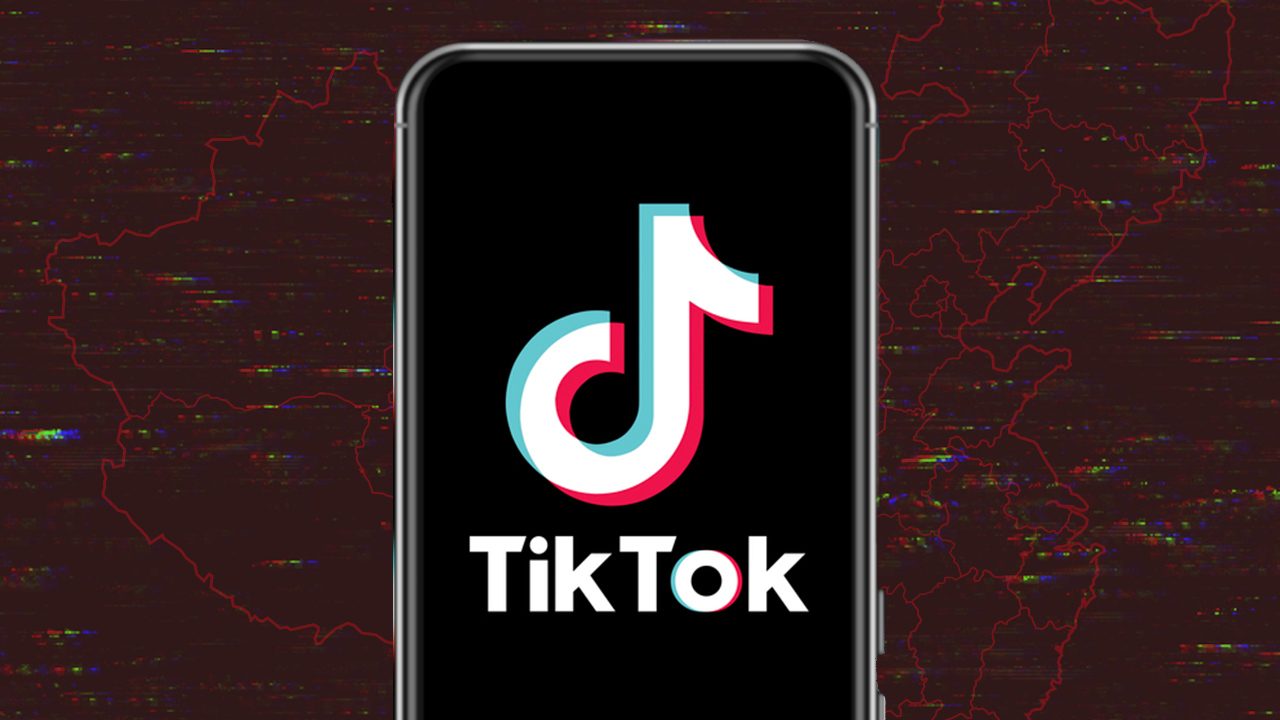
AT A GLANCE
- TikTok’s growth has remained brisk, seeing a doubling of its revenues in two consecutive years, from $2 billion in 2020, $4 billion in 2021, and about $10 billion in 2022. TikTok’s growth is even more impressive given that the rest of the tech giants have seen much slower growth.
- TikTok’s dollar growth is backed by impressive engagement metrics. In Q1 2022 for example, TikTok was top in terms of total average time spent on the platform for Android users at 23.6 hours per month, followed by YouTube and Facebook at 23.2 hours per month, and 19.4 hours per month, respectively.
- In spite of its growth, and in spite of campaigns and partnerships that are meant to tide disinformation on the platform, various independent research by third party organizations indicate that the platform remains on a similar trajectory for disinformation as the older social media platforms.
- At its core, TikTok, like older social media platforms, collects user data, and data points from the behavior of its users on the app, leaving them potentially vulnerable to micro-targeting and manipulation as well.
- Another key concern is its Chinese roots, and a Chinese law that would allow its government to force the company to hand over data to them. The company, including its local Philippine arm, has frequently said that it would not hand over data if compelled, but it remains doubtful whether they could hold off such requests by an assertive authoritarian state.
- In the US, in December, at least six states put up a ban on TikTok on government devices, citing national security concerns in what has become a revival of the former Trump administration’s campaign to ban the app nationally on state devices back in 2020.
MANILA, Philippines – TikTok has had a defiant 2022, amid what has been a challenging year for tech’s biggest names, Google, Facebook, Amazon, Apple, and Twitter, which saw lower revenues or profits. Partly to blame, as the New York Times reported: rising interest rates amid high inflation, and slower consumer spending that no longer matches the extra investments that tech companies made at the height of the pandemic.
TikTok has been the outlier. Its popularity buoyed with people staying at home during the pandemic’s early days, the platform has grown in the past few years. According to Statista, the platform earned $2 billion in ad revenue in 2020, doubling it to $4 billion in 2021. In 2022, TikTok is said to be on track to more than double the figure to at least $10 billion, although it would miss its original target of $12 billion to $14 billion.
What’s the secret sauce? Whereas rivals Facebook saw its revenue decline for the first time in a decade, and YouTube saw the same for the first time since Google started reporting YouTube money figures in Q4 2019, what has gotten TikTok ticking?
For one, TikTok has a ruthlessly efficient algorithm. The Guardian quotes researcher Olivia Little from US non-profit Media Matters, who said that TikTok’s algorithm can “blast random accounts into virality very quickly, and I don’t think that is going to change anytime soon because it’s the reason it has become such a popular platform.”
TikTok dangled the big promise of virality, of internet fame, measured potentially in views amounting to millions, with just a quick, effortless-looking video. That was the initial promise as it was growing in popularity, but as the platform matured, it could be argued that it takes just a little bit more effort now. Still, the allure of thunderclap TikTok fame remains.
Another key is TikTok’s inclusion of in-app video editing tools, and an array of regularly updated effects and filters that allow users to create more diverse-looking videos.
And of course, a big part of TikTok videos is being able to use popular music on the platform for videos. In January 2020, the company announced its deal with a major music label, Merlin, the first to have been publicly announced, before following it up with deals such as those with Sony, Warner, and Universal later that April. The ability to use licensed music in shareable user-made videos was a game-changer, as compared to the main YouTube platform which can strike videos based on music copyright.
The TikTok-like YouTube Shorts and Instagram Reels would follow TikTok’s lead, and allow for music use and remix later on.
But the real secret to TikTok’s success may be its For You page. TikTok is connection-agnostic. Whereas the original Facebook generated a content feed based on people you have confirmed to have a connection with, TikTok’s For You page draws from an endless stream of content from all of the platform’s users, regardless of whether you know them or not, curated by its algorithm. Perhaps that’s also part of the reason how TikTok videos can rack up millions of views. Once the algorithm picks up a video that’s potentially entertaining, it can serve it up to any user, and not just to those that are in a person’s network.
Such was the effectiveness of the For You page, that Facebook itself started to make the switch in June 2022 to recommend more content from outside the user’s network. The TikTok effect extends to Instagram and YouTube which created new TikTok-like products called Reels and Shorts, respectively that feature short-form, vertical videos.
The algorithm has been described to be quite aggressive in determining what videos might be enjoyable. The Guardian wrote that one crucial innovation of TikTok’s algorithm is that it “appears to actively test its own predictions, experimenting by showing videos that it thinks might be enjoyable and gauging the response.” Chris Stokel-Walker, author of the 2021 book TikTok Boom, told the site: “It pushes the boundaries of your interests and monitors how you engage with those new videos it seeds in your For You Page.”
To recap, TikTok draws from a worldwide content pool, created by users motivated to keep you watching or to go viral, with tools designed to make creating entertaining video content easier, and curated by an algorithm that’s especially aggressive at trying to figure out exactly what you want. And all that is its secret sauce.
The company credits its growth to the “diversity of users on the app that create content across all topics.”
Key stats on TikTok’s rise
What has buoyed TikTok’s impressive rise in revenues? It has gotten eyeballs glued, especially those of the younger generation’s.
In Q1 2022, worldwide figures for total average time spent monthly among Android users saw TikTok at the top at 23.6 hours per month. Once again, it beat the biggest platforms, with YouTube (23.2 hours/month), Facebook (19.4 hours/month), WhatsApp (17.5 hours/month), Instagram (11.8 hours/month), Line (10.9 hours/month) and Twitter (5.4 hours/month) all falling behind the ByteDance-owned platform.
According to Insider Intelligence, TikTok has grown to become the third largest social network with 755 million monthly active users, next to Instagram with about 1.3 billion, and Facebook with 2 billion. It has more monthly active users than Snapchat (465 million) and Twitter (345 million).
In the Philippines, there are 35.96 million active users that are 18 years old and above in early 2022, according to Data Reportal, a partner of Hootsuite and We Are Social, which publishes the yearly Global State of Digital report. The number may be higher as the figures, taken from TikTok’s resources for advertisers, do not include users that are below 18 years old. In Southeast Asia, TikTok told Rappler that they have 240 million monthly active users.
TikTok’s money figures can’t compete dollar-for-dollar against Facebook and Google yet, but with its hold on Gen Z, TikTok appears to have laid down quite the runway for it to launch from in the next few years. About 27% of Tiktok’s users are in the 13 to 17 age range, 40% of are in the 18 to 24 range, while another 25% are in the 25 to 34 range.
By comparison, Facebook’s audience is comprised mainly of 25- to 34-year-old users (about 30%), followed by 18 to 24 (about 23%), and 35 to 44 (about 19%).
A similar trajectory for disinformation?
TikTok’s rising number of users, its addictive nature, and the hours people spend on the platform, especially among the younger generation, can make it attractive for anyone running an illicit influence operation.
In a Reuters report, Filipino researcher Jonathan Ong has also said that TikTok is particularly influential and appeals to young Filipinos who make up more than half the voter base.
Like other platforms, TikTok has guidelines in place regarding what constitutes harmful content that must be removed, and publishes regular transparency reports on enforcement efforts. They also make use of a combination of automated tools and human fact-checkers to help with enforcement, working in 70 languages, and refer to a Content Advisory Council to strengthen their policies.
For example, they reported to have removed 89.1 million videos in the second half of 2020, violating their guidelines or terms of service. According to TikTok, that number represents less than 1% of all videos uploaded on TikTok, with 92.4% of the videos being removed before a user reported them, 83.3% before they received any views, and 93.5% removed within 24 hours of being posted.
With regards to the young demographic, TikTok Philippines said that they provide tools for parents to help them guide their children. Their parent and guardians’ page in their Safety Center has guides for helping them guide their children to use the app in an “age-appropriate manner,” how to adjust privacy settings, and how to report inappropriate behavior. “Family Pairing” features allow parents to have more control over their children’s TikTok use, such as what content or users they can search for, and who can comment on their videos, among others.
However, these regular reports and tools have not been able to dispel disinformation concerns, as independent, third-party research continues to find that TikTok may not be doing any better than its older social media kin.
A September 2022 study by US firm Newsguard, composed of journalists tracking disinformation, found that up to 20% of search results on TikTok contain false information. They performed the study by conducting searches using neutral terms such as “2022 election” or “mRNA vaccine” and studying the top results that were being shown. The research was important as TikTok is increasingly being used by Gen Z as a search engine more than Google.
In October, US-based media reforms advocacy group called social media platforms’ efforts against disinformation in 2022 – Facebook, YouTube, Twitter and TikTok – as “full of empty promises.” A big part of the problem, according to the group, is that all four companies have failed to provide sufficient data to show whether there are significant gaps in the application and enforcement of their policies. Exacerbating that is the difficulty in keeping track, as the companies have created a “labyrinth of company commitments, announcements, and policies.”
In short, while these tech companies regularly show transparency reports, the picture is often incomplete, and said, “Reporters covering the technology sector should take nothing from the platforms at face value. Every claim must be backed by empirical evidence and a full-field view of its impact.”
In some ways, TikTok faces an even more challenging task because of the form of the video and the speed at which videos can be delivered. As The Guardian noted, the “ease with which users remix, record, and repost videos” can also allow false information to spread more easily. Like YouTube, TikTok’s video-exclusive content “brings up additional moderation hurdles as artificial intelligence processes may find it more difficult to automatically scrape video content for misinformation compared to text.”
TikTok Philippines reiterated to Rappler, “We are very keen on combating misinformation, making sure it will not grow within our platform. We take a multi-pronged approach to stop it from spreading, while elevating authoritative information and investing in digital literacy education to help get ahead of the problem at scale.”
They also encouraged users to use tools on TikTok to report possibly violative content, and said that reported content are treated with urgency, while campaigns and initiatives are also regularly launched to “strengthen our policies to promote safety, security, and well-being not only of our creators, but more importantly, our users.” Examples include a digital literacy hub on the app, and a 2022 collaboration with the United Nations Development Program that brought 20 content creators across Southeast Asia for a series of classes that looked at “social change messaging for digital creators,” with a focus on anti-hate, anti- bullying and harassment, and how to counter violent extremism in the region.
“Looking ahead to 2023, we will continue to prioritize safety and transparency to build an even safer platform for creative expression,” TikTok Philippines said.
Fact-checking TikTok content in the Philippines
On Rappler, TikTok videos routinely figure in our fact-checking. In May, a manipulated video showing Leni Robredo and Kiko Pangilinan allegedly being admonished by a priest for supposedly forcing him to wear a pink mask garnered more than 7 million views. Another video earlier in April 2022 claimed that Martial Law had been gone before the EDSA Revolution in 1986, garnering 28,000 likes. More recently, in November 2022, a video circulated on TikTok that had falsely claimed that Senator Risa Hontiveros had involvement in missing PhilHealth funds.
These are just a few examples, but along with Facebook, Twitter, and YouTube, TikTok remains a potent vector for disinformation in the Philippines. To put it into context, a FactsFirstPH analysis on Rappler fact checks from October 2021 to March 2022 showed Facebook being the top fact-checked platform with 207 claims, with YouTube having 24 claims, and TikTok with 20.
Journalism professor Yvonne Chua who leads fact-checking initiative Tsek.ph, echoed Rappler fact-checking trends saying that Tsek.ph data also shows that Facebook was the biggest enabler of disinformation among social networking sites, followed by YouTube and TikTok.
Focusing on TikTok, in the last election cycle, then-presidentiable Ferdinand Marcos Jr. was found to be winning TikTok in terms of number of mentions on the platform. From February 1, 2022 to March 31, 2022, Marcos Jr. had 12,000 mentions while rival Robredo had 11,167.
“Marcos dominates election-related talk on the platform, not only in the volume of videos mentioning him but also in average views, likes, comments, downloads, and shares per video. In terms of engagements, Robredo and Pacquiao follow closely in a virtual tie,” Rappler wrote.
Before TikTok’s rise, Marcos’ propaganda machine had been long running, and as the new platform rose, older disinformation narratives such as the Tallano gold smoothly transitioned to it from older platforms like Facebook and YouTube.
About a year before the elections, Rappler had already found videos peddling fake information debunked in other platforms finding a new home on TikTok. “There are also fake videos – already fact-checked on other platforms – that continue to spread on TikTok. These include the false claims that the family of the late dictator Ferdinand Marcos owns millions of tons of gold that could save the Philippines and the world,” Rappler wrote.
Less than a month before the May 9 elections, the Philippine Daily Inquirer concluded that Marcos’ lead on TikTok may be attributed to the proliferation of disinformation. “There were videos whitewashing the atrocities committed during the Marcos dictatorship. But most of the top viewed videos about the Marcoses paint them as a likable, relatable family, with good looks and enviable lifestyles,” the report said.
What were TikTok’s efforts during that time? During the election period, TikTok Philippines partnered with the COMELEC to launch an election guide, and GMA News and Public Affairs. They also have ongoing partnerships with various groups such as Protection Group International, Agence France-Presse, and Internews that help with identifying coordinated inauthentic behavior and misinformation.
Elsewhere in the world, internet nonprofit Mozilla in July 2022 studied Kenya’s August 2022 elections where it concluded that TikTok wasn’t doing any better than older platforms like Twitter and Facebook in terms of controlling election disinformation. Mozilla said, “Rather than learn from the mistakes of more established platforms like Facebook and Twitter, TikTok is following in their footsteps, hosting and spreading political disinformation ahead of a delicate African election.”
The study highlighted the vulnerability of TikTok’s particularly younger audience. Irungu Houghton, executive director at Amnesty international, told Mozilla, “TikTok’s demographic is much younger and it worries me because they don’t have the levels of political maturity or a clear value base that may allow them to sift through such information.”
“TikTok needs to recognize that the demographic they are dealing with is a formative generation and therefore the impacts of such campaigns are not things that we’re likely to see immediately — but we may see its effects in decades to come.”
TikTok, by policy, also does not allow political ads. However, back in June 2021, another study by Mozilla found that while TikTok prohibits political ads, political influence was flying under the radar because “TikTok’s political ad policies are not strong and enforceable enough to monitor the full breadth of paid political influence on the platform.”
“Our research found that TikTok influencers across the political spectrum had undisclosed paid relationships with various political organizations in the US,” Mozilla said.
The China connection
Another top concern with TikTok is that it is owned by a Chinese company, ByteDance.
In a recent report by The Hill in November 2022, Democratic US Senator Mark Warner, chairman of the Senate Intelligence Committee, said, “The China law states that, if they suddenly want to dial up the fact that ‘We are going to decrease content that criticizes Chinese leadership but increase the content that your kids may be seeing saying, hey, you know, Taiwan really is part of China.’ That is a distribution model that would make RT or Sputnik or some of the Russian propaganda models pale in comparison.”
Originally, then-US President Donald Trump attempted to ban TikTok in 2020, a move which President Joe Biden reversed, as his administration sought to create a new framework for assessing risk from apps that may possess a national security risk or those that collect huge amounts of user data.
While the all-encompassing ban was revoked then, the US Transportation Security Administration did ban the app among employees in February 2020, with the state of Nebraska following suit in August 2020. In December 2022, the movement would pick up steam, with six more states joining the movement to ban TikTok from government phones: Maryland, South Carolina, South Dakota, Texas, Alabama, and Utah. A bipartisan US bill banning the app was also unveiled in the same month.
The EU had also launched an investigation into TikTok’s transfer of personal data to China, and TikTok’s compliance with the EU’s General Data Protection Regulation in September 2021. The UK shut down its parliament TikTok account in August 2022, also over concerns that data is being transferred to China.
A report by Buzzfeed in June 2022 stoked concerns, reporting on leaked audio from internal TikTok meetings that allegedly show US non-public data being accessed by China-based employees. The report went “‘Everything is seen in China,’ said a member of TikTok’s Trust and Safety department in a September 2021 meeting. In another September meeting, a director referred to one Beijing-based engineer as a ‘Master Admin’ who ‘has access to everything.’”
In The Guardian’s report about these concerns on how TikTok handles data in relation to its Chinese origins, Surrey University cybersecurity professor Alan Woodward, said that China’s National Intelligence Law, which can compel all domestic companies and citizens to hand over data and information to the government, will generate constant doubt over TikTok.
“I am sure that many companies, and individuals, feel strongly that they would never provide data from their customers to the Chinese state but how could they resist: the law is absolute and the government are not shy about punishing those who fail to comply,” Woodward told the news site.
Senior analyst at the Australian Strategic Policy Institute, Fergus Ryan, in an essay, countered Tiktok’s defense at an Australian parliamentary hearing that the platform’s data is stored in Singapore and the US, and that they would never hand over data to the Chinese government even if asked.
Ryan explained, “The location in which any data is stored is immaterial if it can be readily accessed from China. Moreover, TikTok’s parent company, ByteDance, couldn’t realistically refuse a request from the Chinese government for TikTok user data because a suite of national security laws effectively compels individuals and companies to participate in Chinese ‘intelligence work’. If the authorities requested TikTok user data, the company would be required by law to assist the government and then would be legally prevented from speaking publicly about the matter.”
TikTok has refuted claims that they provided US user data to the Chinese government. TikTok Philippines told Rappler that they would not provide the data if asked by the Chinese government. User data of TikTok Philippines is stored in the US and Singapore as well. They also said that while ByteDance is the holding company of TikTok, they still have an “independent decision-making process” and that they operate “independently with its own product, engineering, and marketing teams.” The company has also set up a page about these concerns on possible demands from the Chinese government, and who has access to user data.
Nobel Peace Prize laureate and Rappler CEO Maria Ressa has also pointed out the connection to China. Ressa said at a November 2022 event in London, fielding a question on whether journalists should be on TikTok: “I think TikTok is part of a geopolitical power play and we have to be careful with our privacy,” Ressa said. “It has two codes: It kept the spinach for China and exported the opioid to the rest of us.”
TikTok’s user numbers are growing, and so are its revenues. But as it grows in popularity, it appears that it’s taking a path similar to the older social media giants. It might have taken a while, but Facebook is seeing a dip, and the constant attention on its disinformation problem couldn’t have helped. And that’s certainly not a trajectory TikTok would like to follow, especially with other geopolitical concerns surrounding its China connection, and as the EU – which has become the leader in Big Tech legislation – enforces its Digital Services Act in 2024. The law will fine platforms as much as 6% of their annual global revenue for failing to police illegal content sufficiently.
TikTok – amid its growth, and bubbling potential even with bans on government devices being done in some US states, and strict EU – will find the spotlight to be even hotter in 2023 on disinformation concerns. TikTok uses an algorithm that, just like the older platforms, is able to thoroughly know its users and what they like and what they don’t like.
That remains the core of the problem as it’s still essentially a big data extraction operation or surveillance capitalism – except it delivers content in a medium that’s even harder to fact-check, and delivers it even more efficiently, to an audience pool not defined by personal connections. – Rappler.com
Add a comment
How does this make you feel?
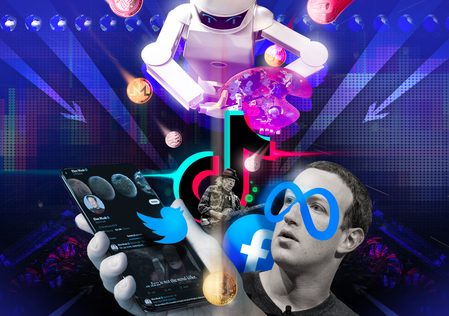
![[Rappler Investigates] Dangers of TikTok](https://www.rappler.com/tachyon/2024/04/dangers-tiktok-april-18-2024.jpg?resize=257%2C257&crop=309px%2C0px%2C1080px%2C1080px)

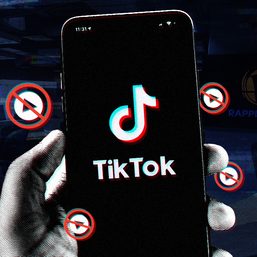
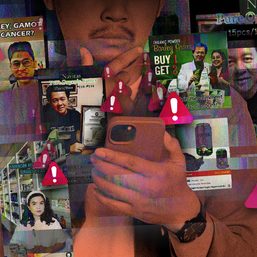
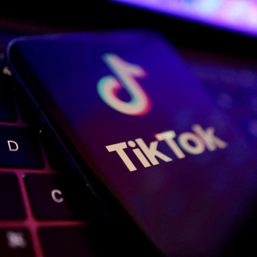



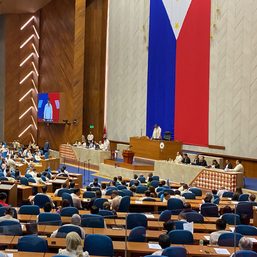

There are no comments yet. Add your comment to start the conversation.